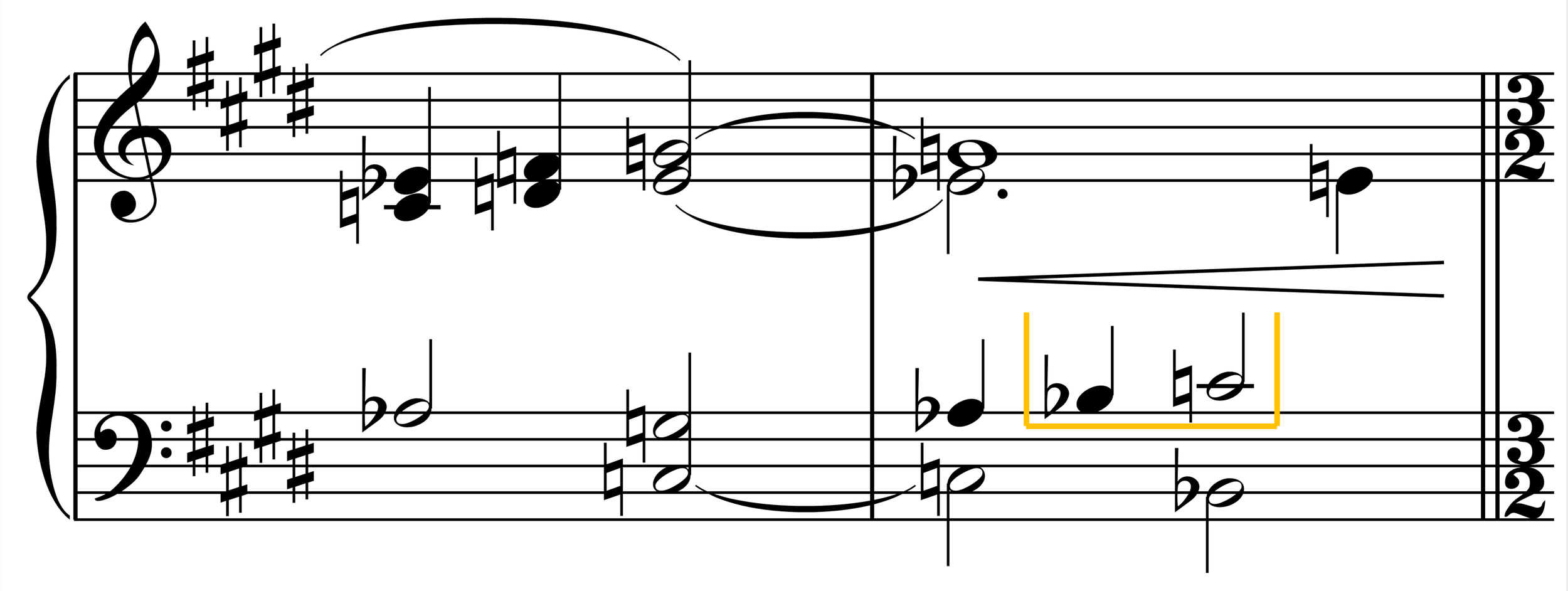Submitted by Jun Guo
Published on 5/14/2020

Submitted by Jun Guo
Published on 5/14/2020

“Taking these notes in the helps make the bass line more legato.”
Submitted by Michael Clark
Published on 3/17/2020

“The right hand is already on this C at the end of the previous measure, and playing it again with the right hand breaks up the left hand into two more manageable positions.”
Submitted by Michael Clark
Published on 3/17/2020

“The right hand doesn’t need to stretch to reach this chord or roll it when the bottom note is within easy reach of the left hand.”
Submitted by Michael Clark
Published on 3/17/20

“The right hand doesn’t need to stretch to reach this chord or roll it when the bottom note is within easy reach of the left hand.”
Submitted by Michael Clark
Published on 3/17/20

“Taking the alto line in the left hand frees the right for an expressive triplet that matches the singer without worrying about a polyrhythm within one hand.”
Submitted by Michael Clark
Published on 3/17/2020

“The left hand has been playing octaves already, so it’s simpler to continue that pattern.”
Submitted by Michael Clark
Published on 3/17/2020

“Keeping the accompaniment figure in the left hand in m. 12 helps the melody line to be more legato.”
Submitted by Michael Clark
Published on 3/17/2020

“These redistributions help reduce the number of position shifts whenever possible.”
Submitted by Michael Clark
Published on 3/17/2020

“This fingering helps facilitate a clear counterpoint of the upward moving motif played before in the right hand without muddying the waters with the pedal.”
Submitted by Wade Troyer
Published on 12/14/2022

“Spacing the chord like this helps all the notes to sound at once and keeps that consistent texture without needing to roll or play the notes before or after the 3rd beat. Also, it allows the left hand to hold the low F# through the quick moving harmonies above it without muddying too much with the pedal.”
Submitted by Wade Troyer
Published on 9/1/2023

“Catching the A in left hand helps achieve a smoother bass line with less reliance on the pedal.”
Submitted by Wade Troyer
Published on 12/14/2022

“This splitting of notes between hands allows the chords to not be rolled in the left hand and the pianissimo in the final measures is easier to achieve. Other moments like this occur throughout the piece but this is the one that makes the most sense to alter.”
Submitted by Wade Troyer
Published on 12/14/2022

“The constant, inner, scalar movement of 8th notes is difficult if playing between the hands as written. I enjoy the sound of this movement if using less pedal which necessitates more splitting and picking up notes between hands.”
Submitted by Wade Troyer
Published on 8/31/2023

“The constant, inner, scalar movement of 8th notes is difficult if playing between the hands as written. I enjoy the sound of this movement if using less pedal which necessitates more splitting and picking up notes between hands.”
Submitted by Wade Troyer
Published on 8/31/2023

“The constant, inner, scalar movement of 8th notes is difficult if playing between the hands as written. I enjoy the sound of this movement if using less pedal which necessitates more splitting and picking up notes between hands.”
Submitted by Wade Troyer
Published on 8/31/2023

“The bottom notes of these sixths fit easily into the left hand.”
Submitted by Michael Clark
Published on 3/17/2020

“It’s awkward to reach the D-sharp in the left hand but the right hand can help.”
Submitted by Michael Clark
Published on 3/17/2020